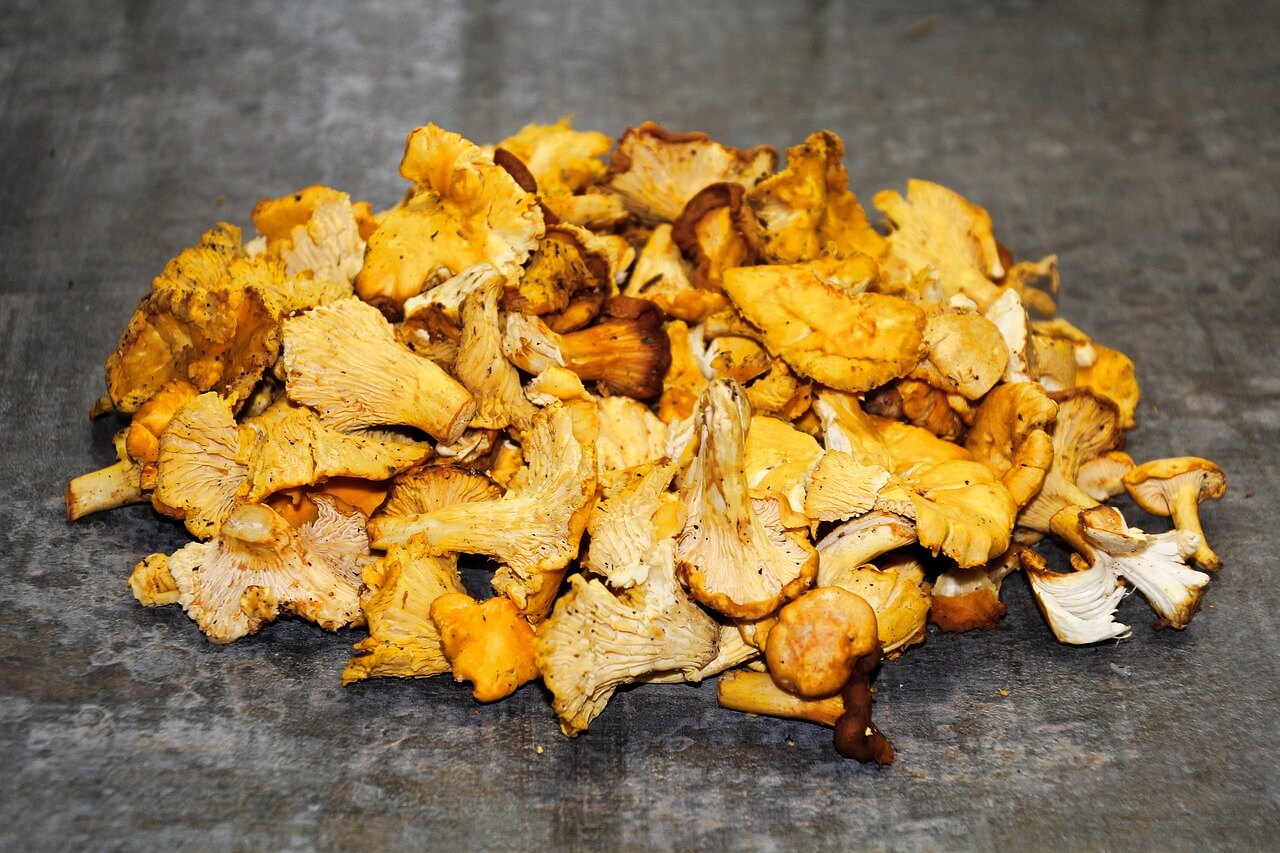As an avid mushroom enthusiast, I’ve had my fair share of encounters with chanterelles — those golden nuggets that add a distinct earthy flavor to any dish. While their hunt is an adventure in itself, cleaning them can be as important to ensure a delicious and safe culinary experience. Here’s an in-depth guide to help you navigate the process seamlessly, preserving the delicate taste of these forest gems.

Image: www.forestwildlife.org
Deciphering Chanterelles
Chanterelles, characterized by their trumpet-shaped caps and wavy edges, are renowned for their sweet and meaty flavor. They thrive in moist forests, making them a favorite find for mushroom foragers. However, before indulging in their culinary delights, it’s essential to clean them thoroughly.
The Cleaning Process: A Step-by-Step Guide
- Sorting: Begin by picking out any damaged or wilted chanterelles. These may harbor contaminants or decay.
- Brushing: To dislodge loose dirt and debris, gently brush the chanterelles. Use a soft-bristled brush or a lightly dampened cloth.
- Trimming: If necessary, trim the base of the stem where it connects to the ground. Remove any excess or fibrous parts.
- Inspecting: Examine the chanterelles carefully. Cut out any sections that appear bruised or moldy to maintain freshness.
- Checking for Insects: Chanterelles sometimes host small insects. To flush them out, soak the mushrooms in salted water for 30 minutes. After soaking, rinse them thoroughly.
- Drying: Use a salad spinner or paper towels to gently pat the chanterelles dry. Avoid using a cloth as it may absorb the flavor of the mushrooms.
Tips and Expert Advice from the Mushroom Master
- Freshness is Key: Always choose fresh chanterelles for the best results. They should be firm, dry, and have a slightly earthy scent.
- Handle with Care: Chanterelles are delicate, so avoid squeezing or crushing them during the cleaning process.
- Limit Water Exposure: While it’s essential to remove dirt, avoid overwashing chanterelles. Excessive soaking can dilute their flavor.
- Store Properly: Cleaned chanterelles can be stored in a paper bag or open container in the refrigerator for up to three days or frozen for later use.

Image: www.youtube.com
FAQ: Unraveling the Mysteries of Chanterelles
Q: How do I identify chanterelles?
A: Chanterelles have a trumpet-shaped cap with wavy edges and a yellow to golden color. They lack gills and instead have wrinkled edges underneath.
Q: Is it necessary to cut off the stems?
A: Cutting the stems is not essential, but removing any woody or fibrous sections can improve the texture of the mushrooms.
Q: Can I use chanterelles that are slightly bruised or moldy?
A: It’s best to discard any chanterelles that show signs of bruising or mold. Consuming contaminated mushrooms can pose health risks.
How To Clean Chanterelle Mushroom
Conclusion
Cleaning chanterelle mushrooms is a crucial step in preparing them for culinary adventures. By following the outlined cleaning process, tips, and expert advice, you’ll ensure that your chanterelles are free of dirt, debris, and unwanted guests. Embark on your next mushroom foraging excursion with confidence, knowing that your chanterelles will bring a delightful taste to your plate.
Whether you’re a seasoned chef or a curious mushroom enthusiast, this guide will empower you to embrace the wonders of chanterelles. So, next time you encounter these golden treasures, remember the cleaning techniques in this article and unlock their full culinary potential. Happy shrooming!